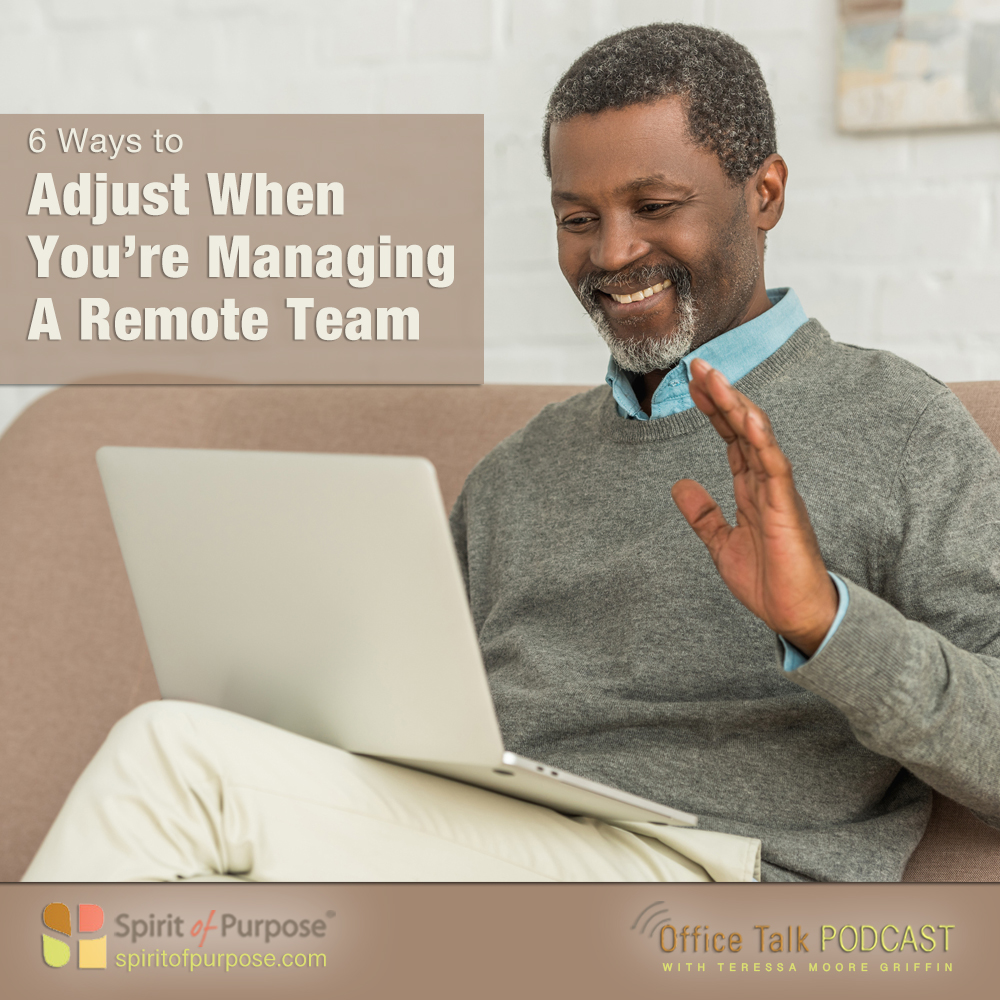PODCAST: 6 Ways to Adjust To Lead A Team Remotely
It goes without saying that managing remotely differs from managing in-person. No more managing-by-walking-around. There are fewer opportunities to give spontaneous feedback. Standing and ad hoc meetings may still happen, but the rules are not exactly the same.
Harvard Business Review contributor Sabina Nawaz offers 6 great suggestions on how to adjust.
- Bridge distance with frequent connections. Check in daily with direct reports, even if you don’t have a specific agenda. Rather than waiting for them to reach out to you, be proactive by contacting them to see if they need anything, to share something of interest, or to let them know you’re thinking of them.
- Hold office hours to blast through questions. For informal questions that don’t require a full meeting, reserve a period each day when team members can contact you. If you can, make it a brief one-on-one conversation – kind of like a drop-by where you shut your office door for a brief, focused discussion. Encourage those who can’t get through to try back in 10 minutes.
- Set up rituals for predictability and structure. Some examples: Have morning check-ins to learn of any overnight developments and evening check-ins to establish the next day’s focus. Open meetings with everyone briefly sharing their mood or state of mind. Try weekly themes, like everyone shares a favorite photo or reveals which shows they’re binge watching.
- Establish clear, safe boundaries. Some team members may feel pressured by your increased availability. Others may want more time than you have to give. Set your boundaries and let each team member do the same. If you choose a time to be off limits, let them know. And acknowledge their right to set boundaries by offering options on how and when its best to connect with them.
- Invite problems, not just solutions. Encourage questions or reports on issues that might not be apparent to you. Let them know that you want them to share problems and challenges and you don’t expect them to have solutions at the ready.
- Make giving positive feedback a habit. People need recognition and good news during times like these. Reserve time at the end of the meeting or day to provide positive feedback for meaningful work. It’s also important to give corrective feedback before minor issues grow into larger problems.


